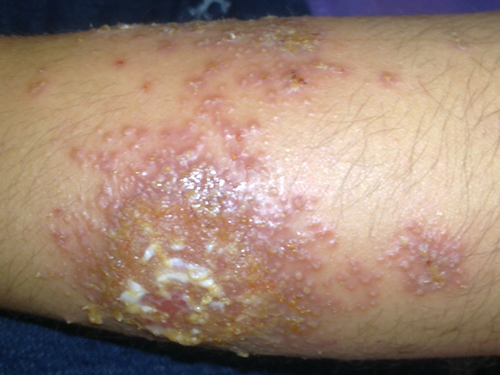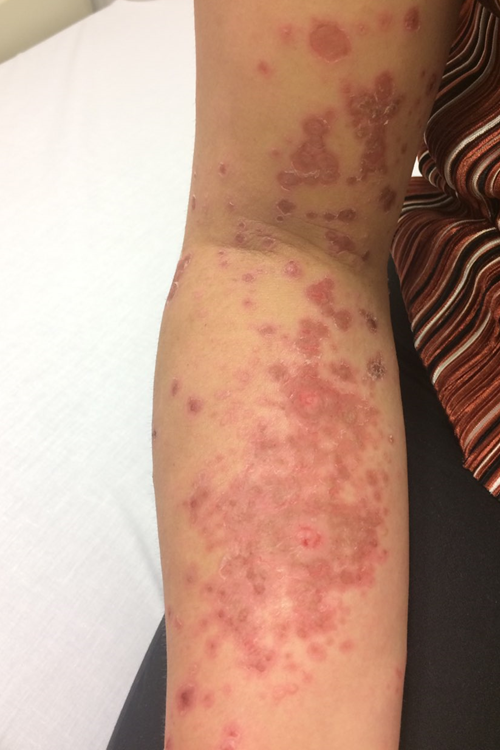Assessment of impetigo
Impetigo occurs most often in children and is contagious; assess other household members for impetigo and treat them if they are affected.
Impetigo is characterised as limited (up to 2 sores) or extensive (more than 2 sores), and can either be:
- nonbullous (photo) – presents as round, pus filled or golden blisters which eventually form a yellow to thick crust; sores may be itchy or irritating, but not painful. Nonbullous impetigo can be caused by Streptococcus pyogenes (group A streptococcus [GAS]) or Staphylococcus aureus, or both
- bullous (photo) – presents as large, floppy blisters, rapidly developing into erythematous, shallow erosions; systemic symptoms of malaise or fever are more likely than with nonbullous impetigo. Bullous impetigo is usually caused by S. aureus.
Patients with impetigo do not require an initial skin swab before starting empirical therapy unless the diagnosis is uncertain or impetigo is recurrentNational Institute for Clinical Excellence (NICE), 2020. A skin swab for culture and susceptibility testing is recommended from patients with impetigo that is not responding to appropriate empirical therapyNational Institute for Clinical Excellence (NICE), 2020The Australian Healthy Skin Consortium, 2023.

Photo sourced with permission from Dr Michelle McRae.

Photo sourced with permission from Dr Michelle McRae.
